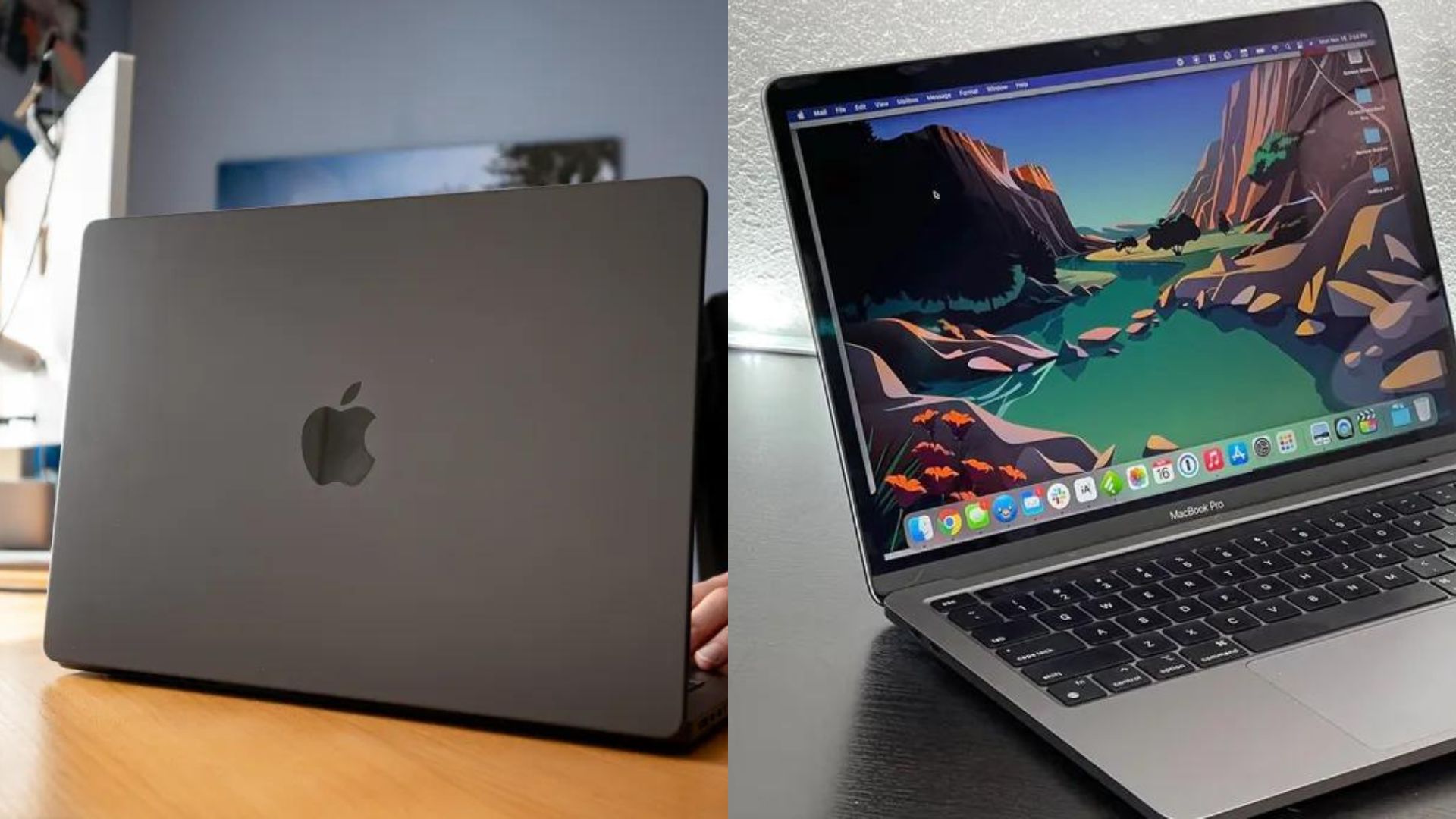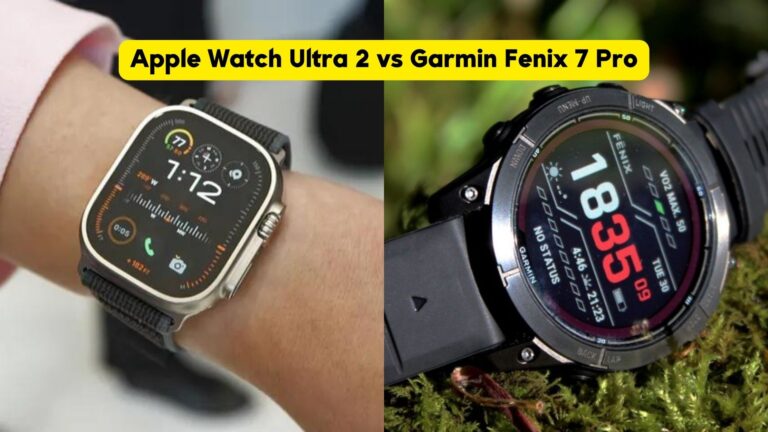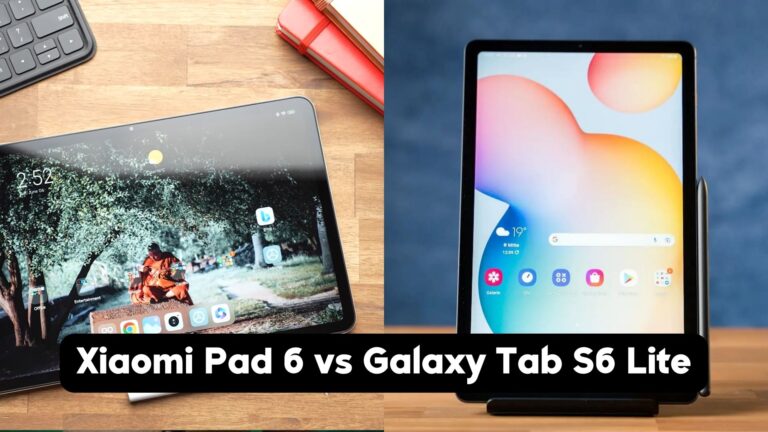Are you trying to decide between the M1 MacBook Air and the M3 MacBook Pro? Well, let me help make that decision easier for you. In this section, we will discuss the key differences between these two models and the factors you should consider before making your purchase.
- The M1 MacBook Air and M3 MacBook Pro both come with 8 GB of RAM, but the price difference between them is significant.
- The M1 MacBook Air has a starting price of $750, while the M3 MacBook Pro starts at $1,600.
- RAM plays a crucial role in the performance of a laptop, so it’s essential to consider your needs before making a decision. If you require more power for tasks like video editing or gaming, you may want to opt for the M3 MacBook Pro with its higher RAM capacity.
Now that we have an overview, let’s dive deeper into the specifications and features of these two models to help you choose the perfect MacBook for your needs.
Specifications
| M1 MacBook Pro | M3 MacBook Pro | |
| Display size | 13 inch, 14 inch, and 16 inch | 14 inch and 16 inch |
| Colors | Silver, Space Gray | Silver, Space Gray, Space Black |
| Touch Bar | Yes (on the 13-inch model) | No |
| Chip | M1 chip (5nm/N5) | M3 chip (3nm/N3B) |
| CPU and GPU | Up to 8 core for both | Up to 12 core and up to 18 core |
| Unified memory | Up to 16GB | Up to 128GB |
| Storage | Up to 2TB SSD | Up to 4TB SSD |
| Ports | Two Thunderbolt / USB 4 ports | Three Thunderbolt 4 (USB-C) ports, HDMI port, SDXC card slot |
| Battery | 58.2-watt-hour lithium-polymer battery with up to 17 hours wireless web and up to 20 hours Apple TV app movie playback | 72.4-watt-hour lithium-polymer battery with up to 12 hours wireless web and up to 18 hours Apple TV app movie playback |
| Camera | 720p FaceTime HD camera | 1080p FaceTime HD camera |
| Price | Starting at $999 | Starting at $1,599 |
Design
When it comes to design, the M1 MacBook Air and M3 MacBook Pro have some notable differences that may influence your decision.
- Comparison of the 14-inch body and the classic wedge shape: The M3 MacBook Pro features a 14-inch body, which offers a more modern look. On the other hand, the M1 MacBook Air has a classic wedge shape that many users find comfortable and enjoyable to use.
- Comfortability for typing: Due to its wedge shape, the M1 MacBook Air provides a more comfortable typing experience. If you anticipate spending a significant amount of time typing, this may be a factor to consider.
- Bezels and Notch comparison: The M1 MacBook Air has larger bezels compared to the M3 MacBook Pro, which features a Notch in its display. The presence of the Notch allows for a larger screen-to-body ratio and a brighter display, making it more suitable for outdoor use.
- Webcam and microphone quality: The M1 MacBook Air features a 720p webcam and built-in microphones, while the M3 MacBook Pro boasts a 1080p webcam and studio-quality microphones. The M3 MacBook Pro offers better video and audio quality, which is advantageous for video conferences, content creation, and online classes.
Considering these design differences, it’s important to weigh your preferences and needs. If you prioritize a classic design, comfortability for typing, and can make do with slightly lower webcam and microphone quality, the M1 MacBook Air may be the better option for you. However, if you desire a more modern look, exceptional webcam and microphone quality, and are willing to invest in a higher-priced model, the M3 MacBook Pro may be the ideal choice.
Ports
When considering the M1 MacBook Air and the M3 MacBook Pro, it’s essential to evaluate the port options available on each device. Let’s compare the ports and connectivity features of these two models:
- MagSafe for charging vs USB Type-C: The MacBook Air uses USB Type-C for charging, while the MacBook Pro offers the convenience of MagSafe charging. MagSafe is a magnetic charging connector that easily attaches and detaches from the MacBook Pro, ensuring a secure connection. On the other hand, USB Type-C is a versatile port that allows for fast data transfer and supports various devices.
- Availability of Thunderbolt ports, SD card slot, and HDMI port in the MacBook Pro: The MacBook Pro stands out with its Thunderbolt ports, which provide high-performance connectivity options. It offers two Thunderbolt ports, enabling you to connect multiple external displays, storage devices, and other peripherals simultaneously. Additionally, the MacBook Pro includes an SD card slot and an HDMI port, which can be useful for photographers, videographers, and individuals who frequently connect their laptop to external displays or projectors.
- Option of using a dongle for additional ports: If you opt for the MacBook Air, which has limited ports, you have the option of using a dongle to expand its connectivity capabilities. Dongles can provide additional USB-A ports, Ethernet ports, HDMI ports, and more. While dongles may not be the most convenient solution, they offer a cost-effective way to gain access to a wide range of ports.
Considering your specific needs and preferences, it’s important to evaluate the importance of these port options. If you require a laptop with a wide range of connectivity options and prefer the convenience of MagSafe charging, the MacBook Pro may be the better choice for you. However, if you are comfortable using dongles to expand your port options and prioritize a more affordable option, the MacBook Air can still meet your needs.
Displays
Now let’s talk about the displays on the M1 MacBook Air and the M3 MacBook Pro. The display is an essential aspect to consider when choosing a laptop, as it greatly impacts your media viewing experience and overall visual satisfaction.
- Size, aspect ratio, and brightness comparison: The M3 MacBook Pro features a larger 14-inch display compared to the M1 MacBook Air. This larger size can provide a more immersive viewing experience, especially when watching movies or working with multiple windows open. Additionally, the M3 MacBook Pro has a notch in its display, which allows for a larger screen-to-body ratio and a brighter display, reaching up to 600 nits. In contrast, the M1 MacBook Air has a 400-nit display and larger bezels.
- Difference between regular use and HDR footage viewing: One notable feature of the M3 MacBook Pro is its mini LED display, which offers enhanced brightness and contrast, making it ideal for viewing HDR (High Dynamic Range) footage. HDR content provides a wider range of colors and a more vibrant visual experience. If you enjoy watching movies or working with HDR content, the M3 MacBook Pro’s mini LED display can significantly enhance your media experience.
- Importance of mini LED display and promotion for media experience: The mini LED display on the M3 MacBook Pro not only delivers brighter and more accurate colors but also features promotion technology. This technology adjusts the display’s refresh rate, making it smoother and more responsive. This can be particularly beneficial for tasks that require fluid motion, such as video editing or gaming. If you prioritize a top-notch media experience, the M3 MacBook Pro’s mini LED display with promotion is worth considering.
Considering these factors, it’s important to determine your specific needs and preferences when it comes to the display. If you value a larger display, HDR content viewing, and promotion technology, the M3 MacBook Pro may be the better choice for you. However, if these features are not a priority and you are satisfied with the display quality of the M1 MacBook Air, it can still provide a great visual experience for everyday use.
Speakers
Let’s now compare the speaker systems of the M1 MacBook Air and the M3 MacBook Pro to understand the audio quality difference.
- Dual speakers in the M1 MacBook Air: The M1 MacBook Air features dual speakers that deliver clear and balanced sound. While they do a decent job, they may lack the depth and bass response of a more advanced speaker system.
- Six-speaker system with dedicated woofers in the M3 MacBook Pro: The M3 MacBook Pro takes the audio experience to the next level with its six-speaker system and dedicated woofers. This configuration provides a wider soundstage, richer tones, and enhanced bass response, resulting in a more immersive audio experience. Whether you’re listening to music, watching movies, or video conferencing, the six-speaker system delivers exceptional audio quality.
When it comes to audio quality, the M3 MacBook Pro clearly outperforms the M1 MacBook Air. The six-speaker system with dedicated woofers offers a more dynamic and robust sound, making it ideal for users who prioritize audio excellence in their laptop. However, if you’re not particularly picky about audio quality and the dual speakers of the M1 MacBook Air fulfill your needs, you may opt for the more affordable option.
Cooling Systems
When choosing between the fanless MacBook Air and the single fan in the MacBook Pro, there are a few key points to consider regarding cooling systems.
- Comparison between fanless MacBook Air and the single fan in the MacBook Pro: The MacBook Air utilizes a fanless design, which means it doesn’t have any fans to cool down the system. On the other hand, the MacBook Pro comes equipped with a single fan to regulate its internal temperature.
- Issue of heating up and fan noise in the MacBook Pro: Due to its single fan, the MacBook Pro can heat up quicker under heavy workloads or demanding tasks. This increased heat generation may lead to the fan operating at higher speeds, resulting in fan noise.
- Silent operation vs better performance: The MacBook Air’s fanless design ensures silent operation, making it ideal for users who prefer a noise-free computing experience. However, the MacBook Pro’s single fan allows for better cooling, enabling the system to handle more demanding tasks and maintain optimal performance.
Considering these factors, it’s important to assess your specific needs and priorities. If you value a completely silent machine and primarily engage in light tasks such as web browsing, email, and document editing, the MacBook Air’s fanless design is a suitable choice. However, if you require a laptop that can handle more intensive tasks like video editing, gaming, or running resource-intensive applications, the MacBook Pro’s single fan will provide better heat dissipation and ensure optimal performance.
Performance
When comparing the M1 MacBook Air and the M3 MacBook Pro, it’s important to evaluate their overall performance in various tasks. Here are some key points to consider:
- Geekbench scores for overall performance: The M3 MacBook Pro outperforms the M1 MacBook Air in terms of Geekbench scores. In single-core tasks, the M3 MacBook Pro is about 32% faster, while in multi-core tasks, it is 38% faster.
- Difference in single-core and multi-core tasks: Single-core tasks are typically basic everyday tasks like web browsing and email, where both models perform exceptionally well. However, for more demanding tasks like video editing or running resource-intensive applications, the M3 MacBook Pro’s higher multi-core performance can handle these tasks more efficiently.
- Graphics performance and its impact on gaming and GPU-intensive tasks: The M3 MacBook Pro offers significant improvements in graphics performance, with an 89% difference in Geekbench 6 Metal scores. This makes it more suitable for gaming and GPU-intensive tasks compared to the M1 MacBook Air.
- Throttling and impact on CPU performance: Due to the M3 MacBook Pro’s fan design, it can handle sustained heavy workloads better than the fanless M1 MacBook Air. In benchmarks like Cinebench, the M3 MacBook Pro shows a 53% difference in performance compared to the M1 MacBook Air under sustained load.
- Comparison in photo editing and video editing tasks: For casual photo editing in applications like Lightroom, both models perform similarly. However, for more complex video editing projects with numerous effects, the M3 MacBook Pro’s superior CPU and graphics performance can offer a smoother experience.
- Use case for casual users and professionals: For casual users who primarily engage in light tasks such as web browsing, email, and document editing, the M1 MacBook Air’s performance is more than sufficient. However, professionals who require more power for tasks like video editing, gaming, or running resource-intensive applications may benefit from the enhanced performance of the M3 MacBook Pro.
Considering these factors, it is essential to assess your specific needs and priorities when choosing between the M1 MacBook Air and the M3 MacBook Pro. While the M1 MacBook Air provides excellent performance for everyday tasks and offers a more affordable option, the M3 MacBook Pro’s superior performance and graphics capabilities make it a compelling choice for professionals and users who require more power.
Battery Life
One important factor to consider when choosing between the MacBook Air and the MacBook Pro is battery life. Let’s compare the battery performance of these two models:
- Comparison of battery life: The M1 MacBook Air is known for its impressive battery life, lasting up to 8 to 10 hours on a single charge. However, the M3 MacBook Pro offers even better battery performance, providing approximately 2 hours more of mixed-use due to its larger battery capacity and more efficient chip.
- Impact of usage on battery life: It’s important to note that battery life can vary based on your usage. Performing more demanding tasks like video editing or gaming will consume more power and drain the battery faster. On the other hand, light tasks such as web browsing, email, and document editing will have less of an impact on battery life.
- Recommendation based on battery performance: If you prioritize long battery life and primarily engage in light tasks, the M1 MacBook Air will be more than sufficient for your needs. Its impressive battery performance combined with its energy-efficient M1 chip ensures that you can work or enjoy media for extended periods without worrying about battery life. However, if you require even longer battery life or plan to engage in more resource-intensive tasks, the M3 MacBook Pro’s extended battery performance may be the better option for you.
Ultimately, the choice between the MacBook Air and the MacBook Pro will depend on your specific needs and preferences. Both models offer excellent battery life, but the M3 MacBook Pro provides a slight edge in terms of extended battery performance, making it a great choice for those who require long-lasting power.
Conclusion
After comparing the M1 MacBook Air and the M3 MacBook Pro, it is clear that both models have their own strengths and are suitable for different types of users based on their needs and budget. Here is a summary of the comparison:
- The M1 MacBook Air is more affordable, starting at $750, while the M3 MacBook Pro starts at $1,600.
- The M1 MacBook Air has a classic wedge shape, comfortable typing experience, and larger bezels, while the M3 MacBook Pro features a 14-inch body, a more modern look, and a Notch in its display for a larger screen-to-body ratio.
- The M1 MacBook Air has a 720p webcam and built-in microphones, while the M3 MacBook Pro boasts a 1080p webcam and studio-quality microphones.
- The MacBook Pro offers more port options, including MagSafe charging, Thunderbolt ports, an SD card slot, and an HDMI port. However, the MacBook Air can use dongles to expand its connectivity capabilities.
- The M3 MacBook Pro has a larger, brighter display with HDR and promotion technology, making it ideal for media consumption. The M1 MacBook Air, while not as bright, still offers a great visual experience for everyday use.
- The M3 MacBook Pro has a six-speaker system with dedicated woofers, providing exceptional audio quality compared to the dual speakers in the M1 MacBook Air.
- The MacBook Air is fanless, ensuring a completely silent operation, while the MacBook Pro’s single fan allows for better cooling and performance under heavy workloads.
- The M3 MacBook Pro offers better overall performance, faster graphics, and is more suitable for gaming and GPU-intensive tasks compared to the M1 MacBook Air.
- The M3 MacBook Pro has a slightly longer battery life, lasting approximately 2 hours more than the M1 MacBook Air.
Based on these comparisons, I would recommend the following:
- If you are a casual user who primarily engages in light tasks such as web browsing and document editing, and you prioritize affordability and long battery life, the M1 MacBook Air is the ideal choice for you.
- If you are a professional or a power user who requires more performance for tasks like video editing, gaming, or running resource-intensive applications, and you value a larger, brighter display, exceptional audio quality, and extended battery life, the M3 MacBook Pro is the recommended option.



